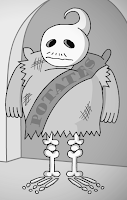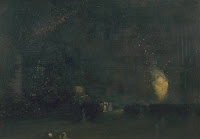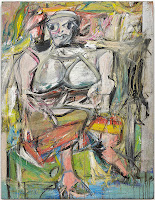Important Notice: It's only spine tingling and horrible when looked at on a large scale. On a small scale, I'm quite happy with my internship.
Here it goes:
I'm an intern again. I’m what’s wrong with the world. I, along with the countless others like me, am killing jobs, slashing wages, and obstructing a diversified workforce. Except I’m even worse than the others are. I’m 27. I’m done with school. I’m killing the dreams of the others too. Stealing internships away from those who actually need the college credit.
 |
| The sad kids whose internships I stole |
“How did this happen,” you ask? How did I become the destroyer of worlds? Lets back up a bit.
I graduated with an undergraduate degree in painting and a minor in art history in 2008. You know, at the beginning of the “Great Recession.” I’d done an internship in a historical society the summer before going to college, another in an art museum the summer after, and some art related work-study jobs in between. But I was naïve and had no idea how competitive the job market would be. Looking back, my oversized cover letter and undersized resume never stood a chance.
 |
| Me, fresh out of college |
So instead, I became a telemarketer. And when I couldn’t stand that anymore, I became a phone based customer service representative. It was hideous, and I hated it. But I know what you’re thinking. I’ve heard it a million times before. “You studied art.” “You should have researched your job prospects before choosing your major.” “You brought it on yourself.” And in a way, I did. I chose a field with precious few jobs. And the ones that do exist are low paid. But you know what? I’d do it again.
And I did. After a year of searching for an art job, I discovered that most positions I was applying for had one phrase in common: “Master’s degree preferred.” So I went back to school, completed two more internships, curated an exhibition, wrote a thesis, and earned my master’s degree in museum studies by 2012. Oh, and racked up lots of debt.
And all the while, I was unwittingly killing your job prospects and probably my own as well.
 |
| What I've done to the economy |
The recession hit museums hard. Along with most industries. We're not special. But with hiring freezes and job cuts, the field still can’t support the number of newly minted masters being churned out each year. To make things worse, all these internships we’re clamoring for seem to be replacing entry-level work and driving down the salaries of the jobs that remain. Why buy the cow when you can get the milk free?
The result is more fully-qualified candidates cycling through a fixed number of part-time, temporary, and yes, even internship positions. It’s great for hiring managers, not so good for emerging professionals. Especially those emerging professionals who can’t afford to do the unpaid internships and volunteer work necessary to perhaps, one day, get a job. We’re excluding a whole facet of society and perpetuating the income gap.
So what do we do to fix the problem? Pass intern labor laws? Rise up and form intern unions? Somehow, we need to stop being so desperate for work that we forget that we’re professionals with valuable skills.
 |
| Job Seekers |
But I’m not going to be the first one to do it. I’m grateful for my internship. I get to learn new things, do interesting work, and hopefully, eventually, use my vast internship experience to beat you all out for the ever-elusive “real job.” You know, the kind with money. The kind that a married 27-year-old is supposed to have by now.
All images courtesy of homestarrunner.com







.jpg)
















